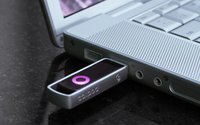 A new Bluetooth is coming to town and marketers and agencies are
taking note.
A new Bluetooth is coming to town and marketers and agencies are
taking note.
The newest iteration of the wireless standard, widely used by smartphones, is moving squarely into the world of the Internet of Things.
The Bluetooth special interest
group’s new wireless standard coming later this year quadruples the current range, doubles the current speed and drives an 800% increase in data capacity.
The technology promises to open
new doors for brands to reach consumers.
“Bluetooth connected devices that can transmit larger amounts of data open up countless marketing possibilities,” Steve Callan, vice
president and director of creative technology at Hill Holliday, told the IoT Daily. “Imagine a home furnishings store that can push decorating tips and discounts for the items in front of you,
or a car that comes with its own promotional video and dealer contact information when you walk up to it.”
advertisement
advertisement
The new Bluetooth is expected to significantly improve overall connectivity and
reliability of the Internet of Things. However, the key for marketers and advertisers is the added capacity for rich media, through what the Bluetooth group calls ad-packets.
“It will be
interesting to see how these new ad packets get expressed on the device, especially as messaging is poised to be the next big mobile platform for connecting brands and consumers,” David Hewitt,
global mobility lead, vice president of consumer experiences at SapientNitro, told the Daily.
One of the most significant features of the new Bluetooth is to link connected or smart devices,
such as beacons, according to the standards body.
“Bluetooth 5 will make beacons, location awareness and other connectionless services an even more relevant part of an effortless and
seamless IoT experience,” said Mark Powell, executive director of the Bluetooth organization.
There also are two potential sides of the new standard, at least in the view of one agency
executive.
“Bluetooth 5 is touted to reduce opt-in hurdles that have been a huge barrier for marketers looking to connect with prospect customers,” said Hewitt. “On the flip
side, if the technology makes it too easy to spam innocent customers, it will quickly face a backlash.”
All of the marketing executives interviewed generally agreed that the new standard
will open up many more customer engagement capabilities, especially relating to new abilities to reach consumers on the go.
“We love the opportunity that Bluetooth 5 provides,”
said Gary Greenstein, Vector’s chief revenue officer at Vector Media, the outdoor advertising company. “Without a cellular or Wi-Fi connections, we can leverage this standard to deliver
rich media and location based offers in conditions never available to us before."
And integration between the physical and digital worlds can mean new opportunity.
This kind of rich
and location-relevant engagement has been increasingly popular, but has been seen as difficult with the current technologies and standards available.
Bluetooth low energy (BLE) helped ignite
the idea of reaching consumers in the right place and the right time via beacons, but so far has been limited due to the need for consumers to download specific apps to actually be beaconed.
However, the new standard stands to change that and enable ‘connectionless’ transmission, where the beacon signal can trigger content to a phone without the need to be paired, which
currently happens through having the company-specific app installed on a phone.
"This is yet another example of investments in technology that power mobile presence marketing,” said Rob
Murphy, vice president of marketing at location-based ad platform Swirl.
“Retail marketers who take advantage of these new capabilities can benefit significantly as the physical and
digital worlds become more and more integrated."
While the new connectivity to consumers opens up the potential for new messaging, marketers are looking to understand how it plays into the
world of their customers, especially with a focus on the upside.
“For retail and hospitality environments like flagship stores, cruise ships and museums, Bluetooth 5 could be a welcome
addition to bringing environments to life with an easy, no-need-to-pair handshake with ability to send rich media making for a more responsive experience,” said Sapient’s Hewitt.
“Ultimately, BT 5 will bring more frictionless convenience to our lives, in a world where finding and opening an app on a smartphone is a chore,” said Sapient’s Hewitt.